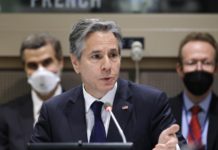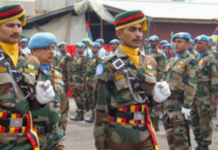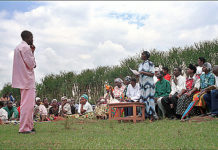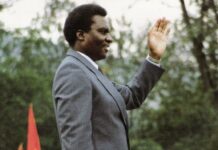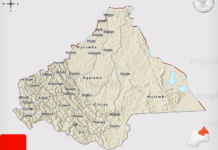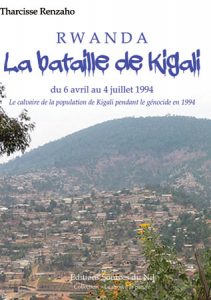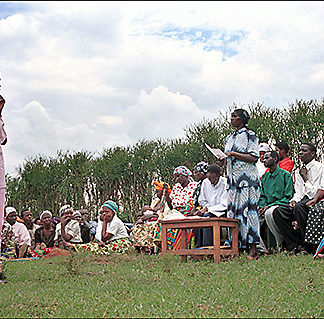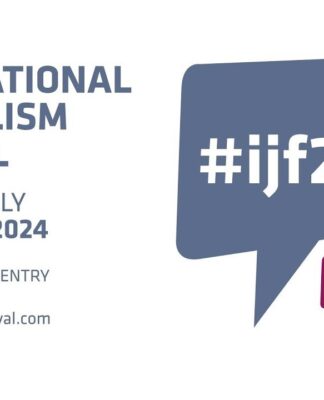Last pages of the book of Tharcisse Renzaho “Rwanda: La Bataille de Kigali,” focus on humanitarian and military operations of moving from the city the civilian population which had been trapped since April 6th, 1994 and counted on the government forces for its security.
After the assassination of president Juvenal Habyarimana and RPF general offensive to take power by force in Rwanda, many residents of the capital felt compelled to leave their city.
The early ones were luckily not caught by bullets or bombs from fighting sides or machetes from Interahamwe, the youth wing of the president’s political party MRND.
Lets remember that RPF inside sources like the author of “Rwanda: The Hidden History,” Abdul Joshua Ruzibiza, have confirmed the presence of a significant number of infiltrated RPF elements in that group, and these were the most active in the massacres for reasons today understandable of helping present Rwandan leaders to get into power.
Kigali’s residents who remained in the city despite the deteriorating situation, week after week, would have to wait until the final day when the Rwandan government army was forced to retreat from the capital.
That would be on July 3rd, 1994 almost three months since the start of the shortest but bloodiest period of the Rwandan history.
On the military front, the ‘Forces Armees Rwandaises’ (FAR) had been losing ground gradually. Many attempts by the interim government of Jean Kambanda for a ceasefire had been consistently rejected by RPF.
The fall of the Kanombe military camp between 21st and 23rd May, 1994 and the loss of Mburabuturo hill towards the middle of June 1994 meant that the governmental army didn’t have any more control over areas of Gikondo and Kicukiro.
Many defensive positions of Kigali had been in the hands of United Nations Assistance Mission for Rwanda (UNAMIR) even before the fatidic date of April 6th, 1994.
This was part of an agreement signed back on December 24th, 1993 between fighting sides and the new UN peacekeeping forces meant to help implement the Arusha Accords of August 3rd, 1993.
From the start of the conflict on October 1st, 1990, the Habyarimana government had continuously and significantly suffered from a well orchestrated campaign of diabolisation by RPF.
Initial UN peacekeepers arrived in Rwanda in October/November 1993. However, as a consequence of the said diabolisation of the government in place, UNAMIR with the Military Commander General Romeo Dallaire in the lead, would during crucial moments of the fighting of 1994 side with the enemy.
For example, it would almost work hard to hand the defensive positions in the Kigali Weapons Safe Area (KWSA) it occupied over to RPF, as war evolved towards the rebels’ victory.
At the eve of the final retreat from Kigali, FAR had managed to hold onto a few positions in the city and its surrounding areas. These included:
- the camps of the presidential guard at Kimihurura and the “gendarmerie” at Kacyiru which had resisted from being captured so far, though they had been encircled and constantly attacked by RPF forces from the early hours of April 7th, 1994;
- a defensive line running from the traffic lights of Nyabugogo continuing towards the valley of Rwampara and the Kigali Mount; the military position at this peak would be crucial in defending the city and during the withdraw; FAR had been well advised not to include it in the negotiable areas at the KWSA discussions;
- FAR still controlled the peaks and mountainsides of Runda overlooking the Nyabarongo river, the Nyaruteja bridge on the road Kigali-Gitarama, and the extended highland of Shyorongi leading to Rulindo area; it had been with the sacrifice of many men that the government forces had succeeded in keeping these positions during almost the three months of the fighting.

As days passed, FAR couldn’t hold on much longer. They had been faced with many challenges in order to fulfil their responsibility of defending the country appropriately, and particularly the capital city. The main ones were:
- UNAMIR which was supposed to be neutral but sided from the start with the rebels and facilitated in many ways their final victory, by particularly giving them Kigali defensive positions that UN peacekeepers were meant to control as agreed;
- complicity with the enemy of some high rank officers among the government forces;
- military embargo against FAR decided by the security council on May 17th, 1994;
- categorical refusal of ceasefire by RPF.
Tharcisse Renzaho explains in his book how the withdraw from Kigali was managed and its challenges. Without enough ammunitions to pursue the defense of the city, the decision of leaving was confirmed in the first days of July.
“On July 2nd, 1994 at 20:00 pm, an officer from the ‘gendarmerie’ headquarters called me to inform that FAR were leaving Kigali because of the lack of ammunitions,” he indicates.(page 295)
The main challenge in the withdraw from the city was to communicate the information to the population which had stayed in different areas of the small pocket of resistance of uphigh Nyarugenge and Nyamirambo pushing back RPF attacks so far, without alerting the enemy about the military manoeuvre before and once in motion.
An important military operation of breaking the RPF’s siege of Kigali was envisaged by the FAR in order to leave the city and safeguard as well the lives of many that the rebels had been targeting through random shelling and bombing day after day.
The information about the withdraw was communicated through an established channel and developed as the conflict evolved which consisted of nine responsibles of the sectors which were still under the control of the government army in the city.
On July 3rd, 1994 by 4:00 pm, everyone who wanted to leave the city supposedly under the protection of FAR was informed of the preparations for retreat. The operation started in the evening hours of that day – most precisely at 6:30 pm by the reconnaissance units which had to move, open and break the RPF siege.
“… RPF troops already occupied the Nyaruteja bridge on the river Nyabarongo, on the road Kigali-Gitarama! It was therefore impossible to pass by that direction to reach Ndiza in Gitarama; the only remaining option was to go towards Bumbogo, in the north of rural Kigali by using the small road of Muhondo alongside the river and end up at the centre of Muhondo… It was on July 4th, 1994 around 5:00 am,” explains the author (page 298).
In the middle of rockets, propelled grenades and bombs thrown by RPF to the fleeing population, – with FAR elements fighting back as much as possible – and the sacrifice of hundreds of lives both military and civilian, the majority of people, meaning tens of thousands, who were previously in Kigali managed to get out of the siege.
Thereafter, the majority of the flow of populations which included those who had come from different regions of the country and fleeing RPF massacres from Byumba, Kibungo and rural Kigali, settled temporarily for one day or two in the area of Muhondo.
But they had to move quickly towards the West (Gisenyi) by the shortest route, once they learned about the massacres RPF rebels were committing against civilians who had taken the direction of Rulindo in northern rural Kigali.
The exodus of the Rwandan population in unprecedented proportions from its national boundaries had already started. By the middle of August 1994 almost half of Rwandans were refugees in neighboring countries and beyond.
Massive internal displacement of populations caused by atrocities of the rebels had started with the attack of Rwanda a few years before on October 1st, 1990. At the eve of the assassination of president Habyarimana, 1 million of displaced lived miserably at the outskirts of Kigali.
Since then, wars and massacres of populations which have characterised the region and have seen the death of millions of civilians should be looked at from the perspective of the end of the Cold War with US as the unique superpower of the time reshaping its influence in Africa, and the will of local warlords including the current Rwandan president Paul Kagame of establishing a new social order based on historical supremacist ideology of his Tutsi ethnic group.
The book of Tharcisse Renzaho has that particularity of describing in many details the events which unfolded in Rwanda during the tragic 100 days of 1994 from the perspective of a public figure, actively involved as Mayor of Kigali at the time.
He is presently and unfortunately condemned by an International Criminal Tribunal for Rwanda (ICTR) which applied a victor’s justice instead of investigating and judging perpetrators of atrocities committed against Rwandan people as a whole.
TO BUY THE BOOK “RWANDA: LA BATAILLE DE KIBALI,” PLEASE CLICK HERE.
Editor’s Note:
Where were you on July 3rd, 1994 if you can remember? I do agree it is long time ago. Please could you share with us what you thought for example when you heard that the interim Rwandan government led by Jean Kambanda had been defeated by the Rwandan Patriotic Front led by Paul Kagame? Far away from the events unfolding on the ground, and probably without any connection with them but still aware that a tragedy was going on, what could’ve been your thoughts at the time?
Ambrose Nzeyimana



